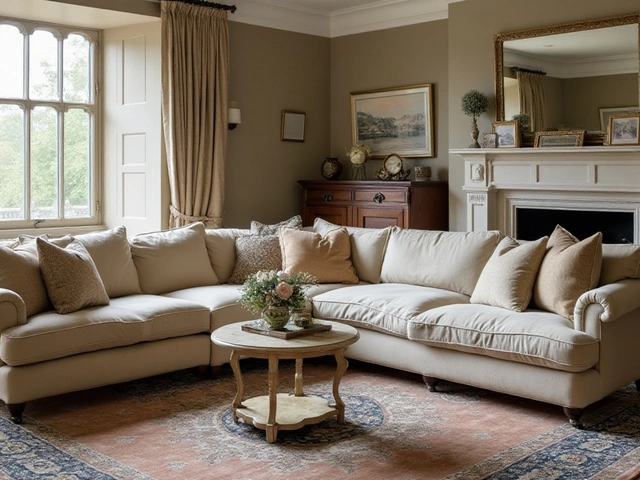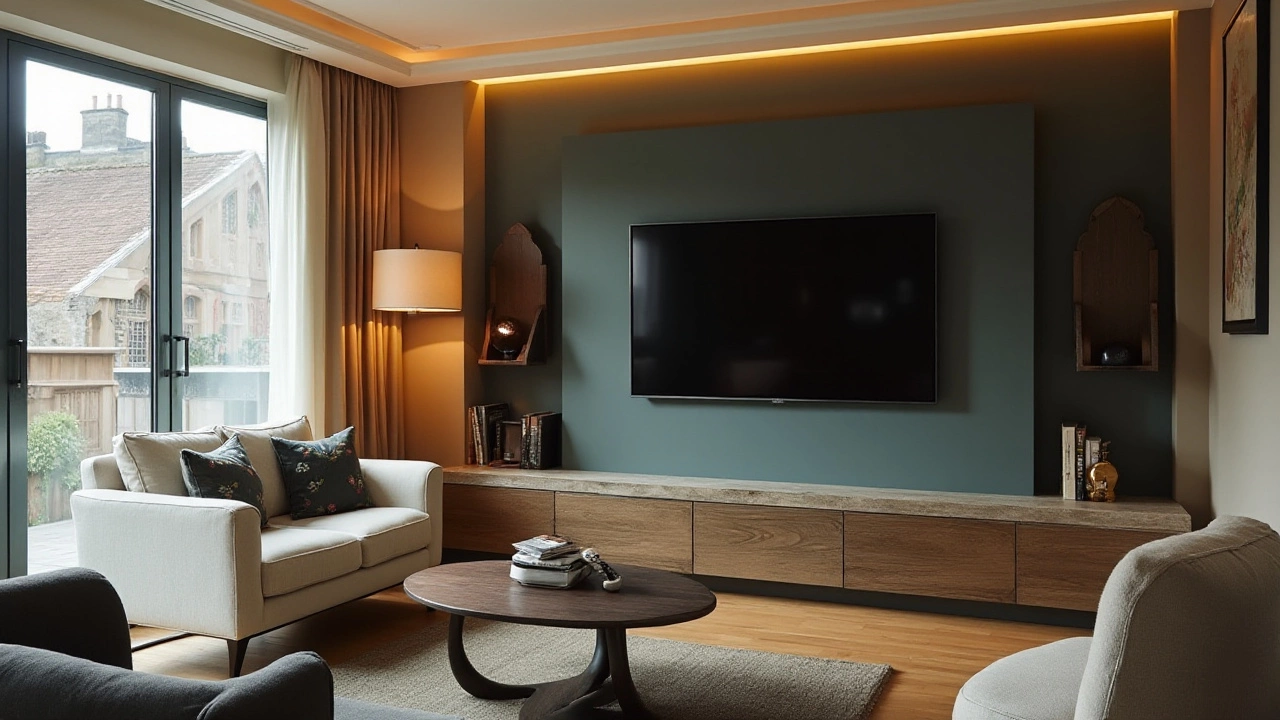 16
Jan,2025
16
Jan,2025
Mounting a TV seems like a simple enough task, but getting the placement right is crucial for both aesthetics and usability. If you're considering hanging that flat-screen beauty, it's essential to think twice about where it's going.
One common mistake people make is placing their TVs over a fireplace. It might seem like a good way to create a central feature in the room, yet this can lead to terrible viewing angles and potential heat damage. There’s a science to where and how you should mount a TV, and it begins with understanding what spaces to absolutely avoid.
Another pitfall is situating your TV near windows. Glare can turn your favorite show into a shadowy silhouette, making it impossible to watch with any clarity. Ambient light can be the enemy of a crisp, clear screen, and natural light sources should be taken into account.
The height at which you mount your TV is just as important. A TV set too high or low can lead to neck strain over time. Consider having it at eye level when seated for a comfortable viewing that’s easy on your posture.
Finally, cable management is not just for aesthetics. Proper organization prevents tripping hazards and tangled messes, keeping your setup functional and clean. These practical tips can save you from a lot of hassle and result in a better viewing experience in the long run.
- The Perils of Mounting Above the Fireplace
- Why Avoid Windows and Direct Sunlight
- Understanding Optimal Heights and Angles
- Cable Management Considerations
The Perils of Mounting Above the Fireplace
Mounting your TV above a fireplace might seem like a great idea — after all, it marries two focal points of the living space. But let's examine that notion more closely. One primary concern is heat. Fireplaces can emit significant heat, especially during the colder months, and prolonged exposure to elevated temperatures can seriously damage the internal components of your television. This can shorten its lifespan and impact performance. It's crucial to understand that most electronic devices are sensitive to heat, which can affect the delicate circuitry inside. Televisions, known for their sensitive nature, are no exception.
Beyond the heat issue, consider the viewing angle. Mounting your TV high above the fireplace often requires viewers to look up, leading to an unnatural neck posture. Over time, this can result in discomfort or even chronic neck pain. Ergonomically speaking, your television should ideally be at eye level when seated. The experience of craning your neck to catch your favorite shows can be taxing and could detract from an otherwise relaxing evening. If comfort and ease of viewing are your goals, it's best to consider alternative placements.
"Heat is the primary enemy of electronics," says a report by a leading home electronics service provider. "Mounting above a heat source like a fireplace can significantly reduce the lifespan of your devices."
Another factor to mull over is aesthetic functionality. While the idea of merging your TV mount with a mural or art piece above the mantelpiece can seem appealing, it can often lead to a cluttered look. The TV might overshadow exquisite art pieces or family photos, reducing the impact of your already existing designs. Balance is key when creating an inviting and visually appealing living area. One can easily misjudge the dimensions and end up with a disproportionately large TV that dominates the space.
Additionally, the overall glare from the fireplace's reflective surfaces can be detrimental. The bright flames and glass doors can cause annoying reflections on the television screen, making it tough to immerse yourself fully in the visual experience. This can take away from the clarity and quality of the images displayed on the screen, contributing to a frustrating viewing session.TV mounting must cater to comfort and visual enjoyment while negating elements that could mar the experience, such as glare.
If you're determined to mount your TV in this area because it seems to be the only available space, consider options like a mantel mount. A mantel mount allows the TV to be pulled down to eye level when in use, and moved back up when not. This can be a worthwhile compromise, providing safety from the heat and an ergonomic viewing experience. Research carefully and consider seeking professional advice to ensure safe installation.
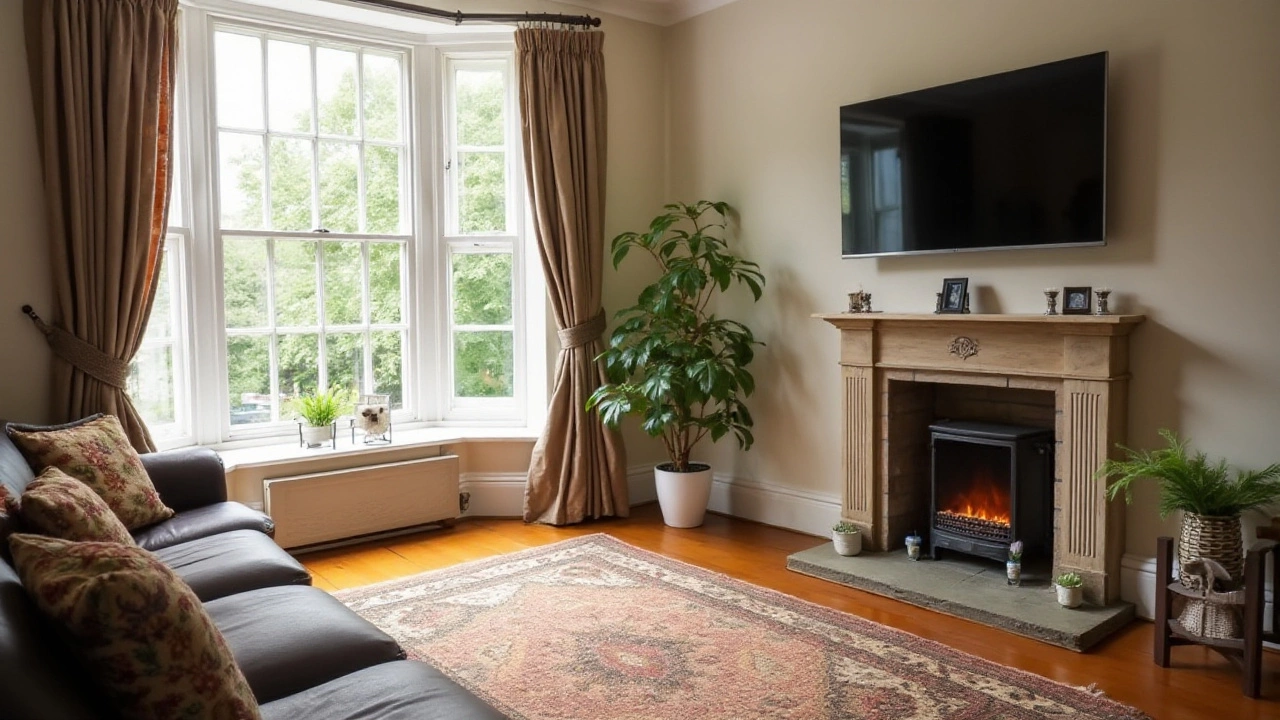
Why Avoid Windows and Direct Sunlight
Placing your TV near windows or in direct sunlight often leads to a less than optimal viewing experience. It's an easily overlooked mistake, especially when trying to maximize space or achieve a particular layout. Yet, the consequences can substantially affect your enjoyment. The primary issue here is glare. Natural light can create reflections that obscure the screen, making it challenging to see details in any broadcast content. This glare can shift throughout the day as the sun moves, meaning you might have to readjust your seating or even the TV's angle regularly to avoid missing out on your favorite shows.
Beyond glare, sunlight can impact the TV in other ways too. Exposure to direct sunlight for extended periods can cause the TV's components to overheat, potentially leading to damage over time. The UV rays can also lead to the fading of color and crispness of the imagery on your screen. Additionally, being near a window may mean a higher chance of temperature fluctuations, which doesn’t bode well for electronics.
Many experts in home decor and technology often caution against this practice. As noted by an editor from Home Technology Magazine, "Even if you think you’ve found the ideal TV spot, continuous exposure to sunlight can end up affecting both the performance and the lifespan of your device." Considering such insights, it's worthwhile to reassess any potential mounting locations, keeping these factors in mind.
For those dealing with small spaces or unavoidable window positions, consider investing in curtains, blinds, or shades to control sunlight as effectively as possible. Modern advances have brought us films and shades that block UV rays while allowing natural light to filter through, offering a potential solution. For a tech-savvy touch, some companies offer automated window treatments that can be programmed to open or close at specific times. This can be an excellent way to protect your TV against the deleterious effects of sunlight without having to manually adjust throughout the day.
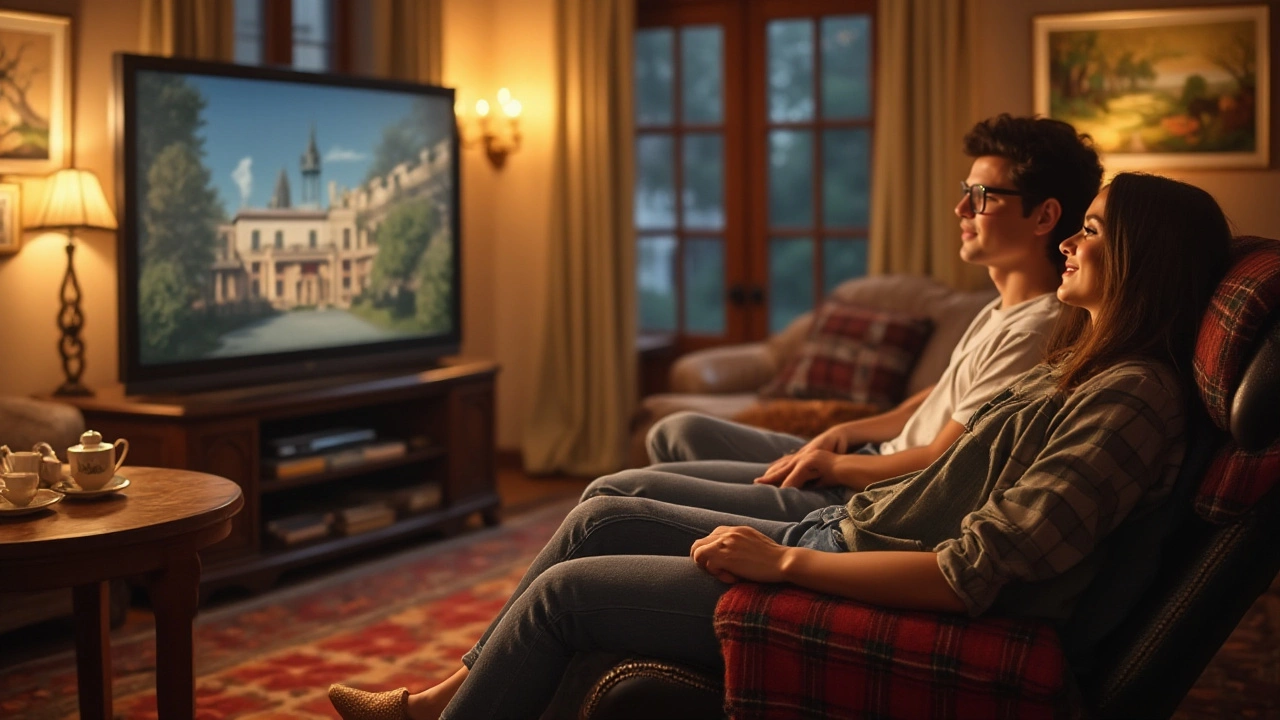
Understanding Optimal Heights and Angles
For many, the heart of a living room revolves around the television. With increased clarity and larger screens becoming the norm, ensuring the best possible viewing experience has never been more critical. The crucial aspect of achieving this lies in understanding the optimal heights and angles for mounting your TV. While it might be tempting to place your screen at a height that fits the room's decor, the comfort of viewing should take precedence. The idea here is to make the screen parallel to your line of sight when seated. Typically, this means mounting the TV so that the center of the screen aligns closely with the eye level, generally around 42 inches from the floor for a seated adult. Think about it as inviting your television into your personal space, rather than towering it above you like an unsympathetic giant.
Balancing aesthetics and comfort is key. Particularly in rooms where furniture dictates a more relaxed seating arrangement, consider a slight tilt to your TV mount. This method allows for adjusting the angle for improved viewing clarity, especially in larger rooms or when you're prone to lounging on the couch. Surprising as it may sound, extensive studies have shown that improper TV heights may not just affect comfort but could be contributing to long-term physical issues.
An article published in the Journal of Ergonomics in 2022 indicated, "Viewers who consistently watch television sets mounted too high are at risk of developing chronic neck pain akin to 'text neck' experienced by frequent smartphone users."This little maneuver can make all the difference in reducing strain without sacrificing style.
When configuring a mountable vision station, many homeowners explore dynamic environments, such as communal spaces extending into open living spaces or kitchen areas. Yet, it's vital to bear in mind how this viewing axis shifts. Architects and designers frequently suggest open dish-out shelving to accommodate such cross-room visual engagement.
- Look at your floor plan: Make sure you consider walk-through paths and potential for obstruction.
- Verify line of sight: Sit in the different spots of your living room and see if there might be a piece of furniture blocking the view.
- Mind the light sources: Angles that dodge direct reflections from windows or other strong sources of ambient light are optimal.
To further expand this expertise, leveraging technology may amplify these effects. Articulated TV mounts come into play as versatile solutions for dynamically altering the angle and height of your screen as needed. Pixel-refresh technologies in modern TV screens have made viewing vivid and balanced images possible even from extreme side angles, something unheard of in the early TV days. Data suggests that TVs mounted using these flexible options report a 25% improvement in user satisfaction based on survey results from a leading electronics firm in 2023, which studied over 1,000 households across North America.
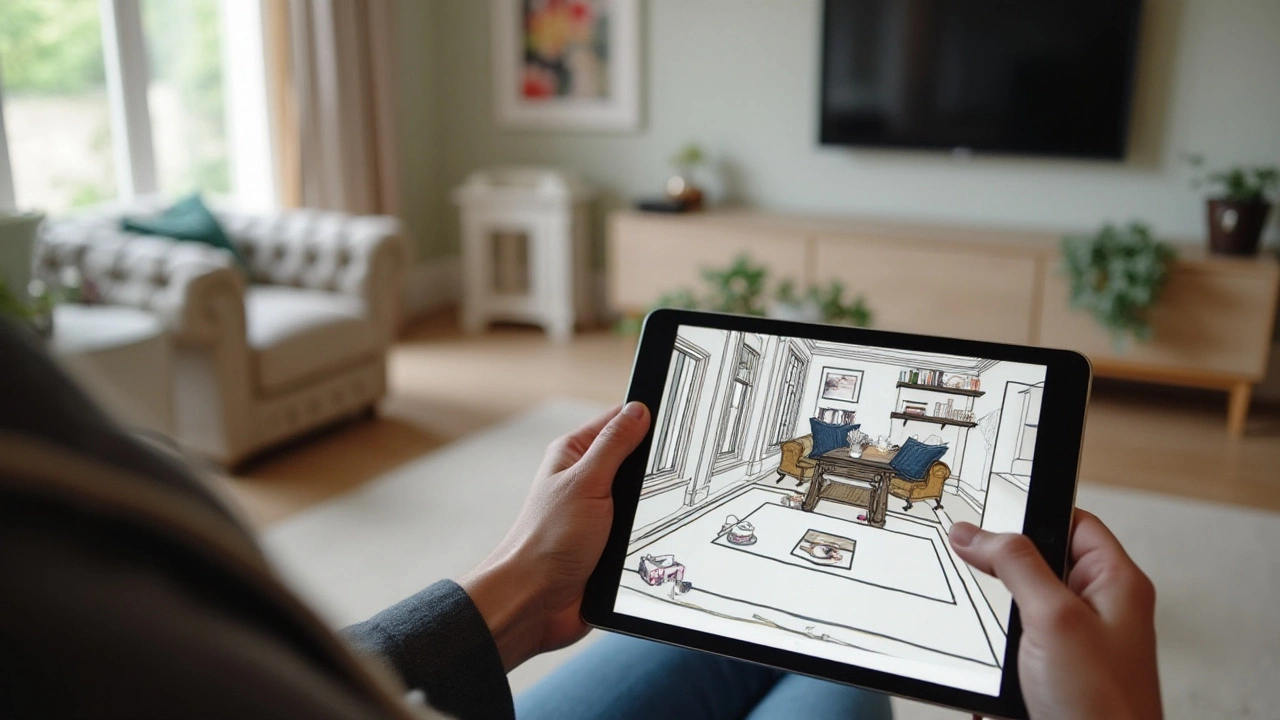
Cable Management Considerations
When it comes to setting up your TV area, managing cables efficiently is crucial, not just for aesthetics but also for safety and practicality. Nobody enjoys the sight of tangled cords and cables cluttering an otherwise sleek viewing area. Improper cable management can be an eyesore and a safety hazard, posing potential risks of tripping or damage to your electronic devices. There are several ways to keep your space clean and organized, while also ensuring that the life of your equipment is not compromised due to cable congestion. One effective strategy is to group cables into bundles using zip ties or Velcro straps, which not only keeps them together but also simplifies the process of identifying which cable connects to which device when it's time for maintenance or updates.
Understanding the layout of your living space is essential in determining how to best manage cables. Consider the placement of your outlets and the distance between them and the TV, as well as any surrounding furniture. Using cable management systems like cable trunking or covers can help conceal the wires, giving your setup a neat and professional look. These systems often come in various styles and colors, allowing you to match them seamlessly with your existing decor. Adding a personal touch to your cable management strategy can be both creative and effective. For instance, incorporating a cable box or basket can store excess cables, making it easy to access them without creating clutter.
A well-organized cable arrangement ensures that your viewing experience remains optimal without unnecessary distractions, giving you a clear and unobstructed path both visually and physically. This is particularly important if you have a large number of devices, such as gaming consoles, streaming devices, or sound systems, connected to your TV. Each of these devices might require its own power source, making the power strip a vital piece of equipment in a neatly organized network of cables. It's crucial to invest in a quality power strip with surge protection to guard against unexpected voltage spikes that may damage your electronics. While tackling cable management can seem daunting, breaking it down into manageable steps, such as assessing your needs, grouping cables by type or length, and prioritizing frequently used connections, can simplify the task and result in a more efficient setup.
For those open to trying innovative solutions, integrating smart home technology into your cable management approach can also be beneficial. Devices that incorporate wireless technology can reduce the need for numerous HDMI or USB cables, freeing up space and reducing the clutter behind your TV stand. As the world increasingly moves towards wireless connectivity, considering devices that are part of this smart ecosystem could future-proof your setup and enhance the viewing experience. Incorporating cable management systems that allow for easy upgrades can save time and effort when adding new technology or replacing old components. As noted by renowned interior designer Jonathan Adler,
"Efficiency and aesthetics go hand in hand; a well-concealed cable is the silent partner in a polished room."
When investing time and resources into managing your cables, remember the significance of keeping it straightforward to change and upgrade. This flexibility not only makes maintenance hassle-free but also allows you to easily adapt to future technological advancements. It's clear that with a bit of planning and creativity, effective cable management can transform any TV area into a clutter-free zone that prioritizes function without sacrificing form. Whether you're a minimalist at heart or a gadget enthusiast with numerous devices, keeping those cables in check ensures that your technical nest looks as good as it performs, standing as a testament to both good planning and a commitment to a clean environment. Remember to utilize wall-mounted cable management options wherever possible to free up floor space and maintain a minimalistic style that enhances both your technical and design aspirations.

